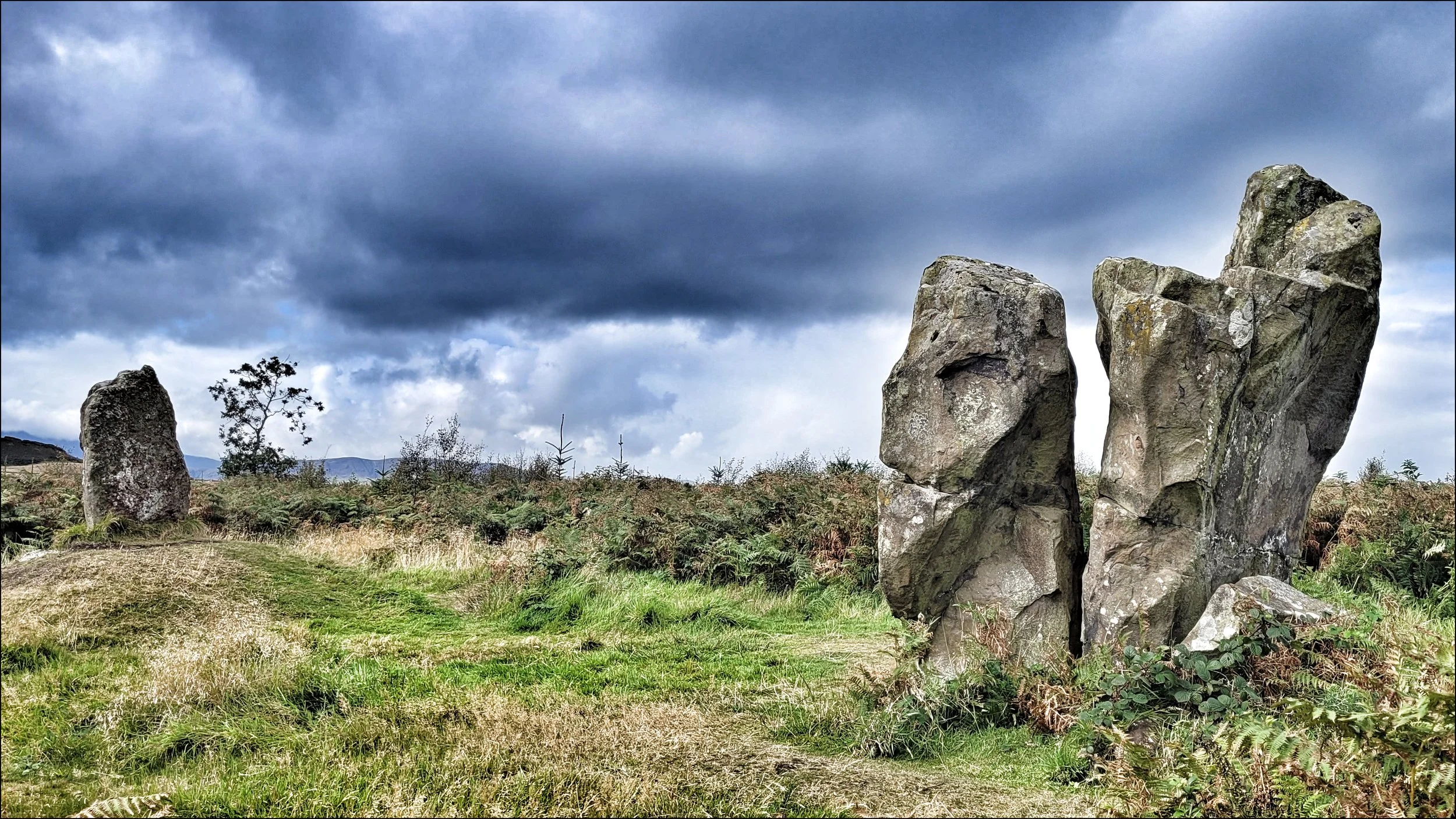03.09.2025
I have returned to Scotland with a friend for a third September in succession, this time focusing on the Islands of Bute and Islay. After a short ferry crossing between Wemyss Bay and Rothesay we drove down to Kingarth and Kilchattan Bay where I did some walking around the southern headland taking in Glencallum Bay and the atmospheric St Blane’s Church dating back to the sixth century. Just north of the church is the Neolithic centre piece of the Island, Blackpark Stone Circle.
It’s location is opposite Baird’s Air Strip, made up of a grass field, a wind sock and a wooden hut. The circle is tucked away in dense fern cover with a few trees blocking the view of the bigger stones. A path leads from a parking area to the three largest stones in their own clearing. The first of the stones you come across is conglomerate with quartz deposits amongst it’s ugly rough surface. It was top heavy with a very worn base and was supported by an iron bar on one side. My friend noticed a vibration was coming from it and I noticed it too as I placed my hand near the surface. It was a confusing sensation and possibly a result of all the mineral deposits present.
The middle stone was a red sandstone giant at nine feet high and the most compelling of the three, standing like a cracked molar tooth with a vertical split down the middle and another break to one side leaving a short stump. Walking slowly around it the stone drew you in to touch it’s surface and feel all it’s unusual shapes and angles. Graffiti was evident and coins had been placed in the cracks. It was totally unique to any component within a circle context I’d seen for a long time. Aside from the third stone at seven feet and more conventional in shape, the other stones had long since fallen and lay covered by the ferns. I followed an arc and found not a single one, only the plantation’s tree stumps . I wondered, what had been the role of the split stone ? I returned to it to find my friend had placed an arm in the crack and felt an energy passing from one side to the other.
Like the first stone the third one was conglomerate and stood on a mound with grass covered packing stones. It had been damaged and subsequently restored in the 1970’s.
A thirty minute walk away towards the western coastline was another site of interest. A footpath lead me from the road over newly harvested fields to a remote corner south of the airfield.




